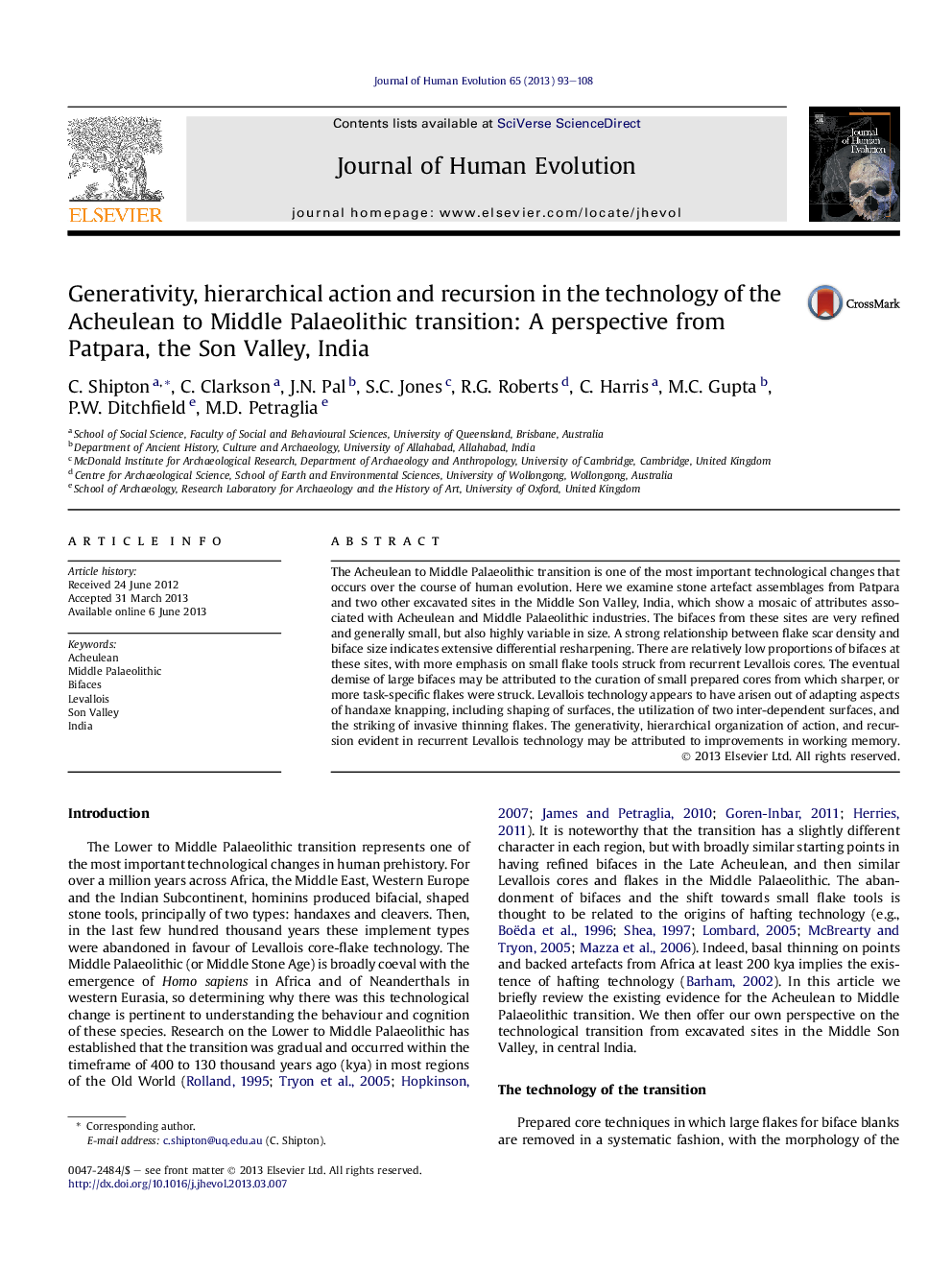| Article ID | Journal | Published Year | Pages | File Type |
|---|---|---|---|---|
| 4556158 | Journal of Human Evolution | 2013 | 16 Pages |
The Acheulean to Middle Palaeolithic transition is one of the most important technological changes that occurs over the course of human evolution. Here we examine stone artefact assemblages from Patpara and two other excavated sites in the Middle Son Valley, India, which show a mosaic of attributes associated with Acheulean and Middle Palaeolithic industries. The bifaces from these sites are very refined and generally small, but also highly variable in size. A strong relationship between flake scar density and biface size indicates extensive differential resharpening. There are relatively low proportions of bifaces at these sites, with more emphasis on small flake tools struck from recurrent Levallois cores. The eventual demise of large bifaces may be attributed to the curation of small prepared cores from which sharper, or more task-specific flakes were struck. Levallois technology appears to have arisen out of adapting aspects of handaxe knapping, including shaping of surfaces, the utilization of two inter-dependent surfaces, and the striking of invasive thinning flakes. The generativity, hierarchical organization of action, and recursion evident in recurrent Levallois technology may be attributed to improvements in working memory.
